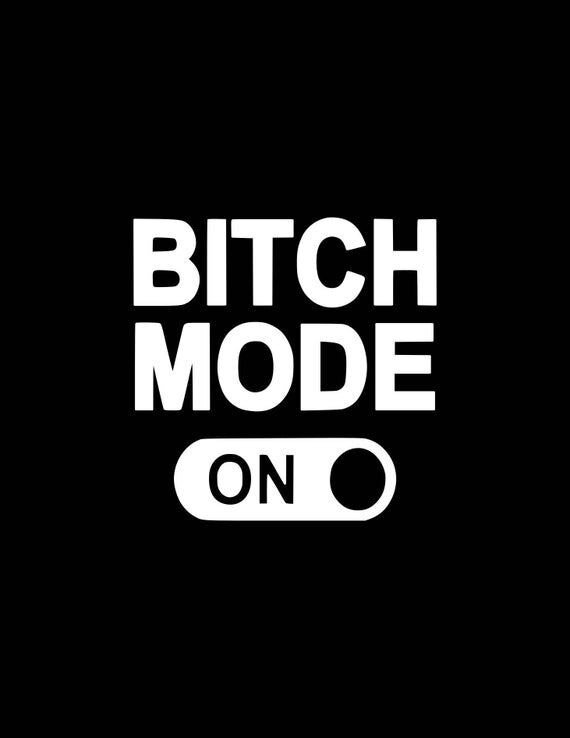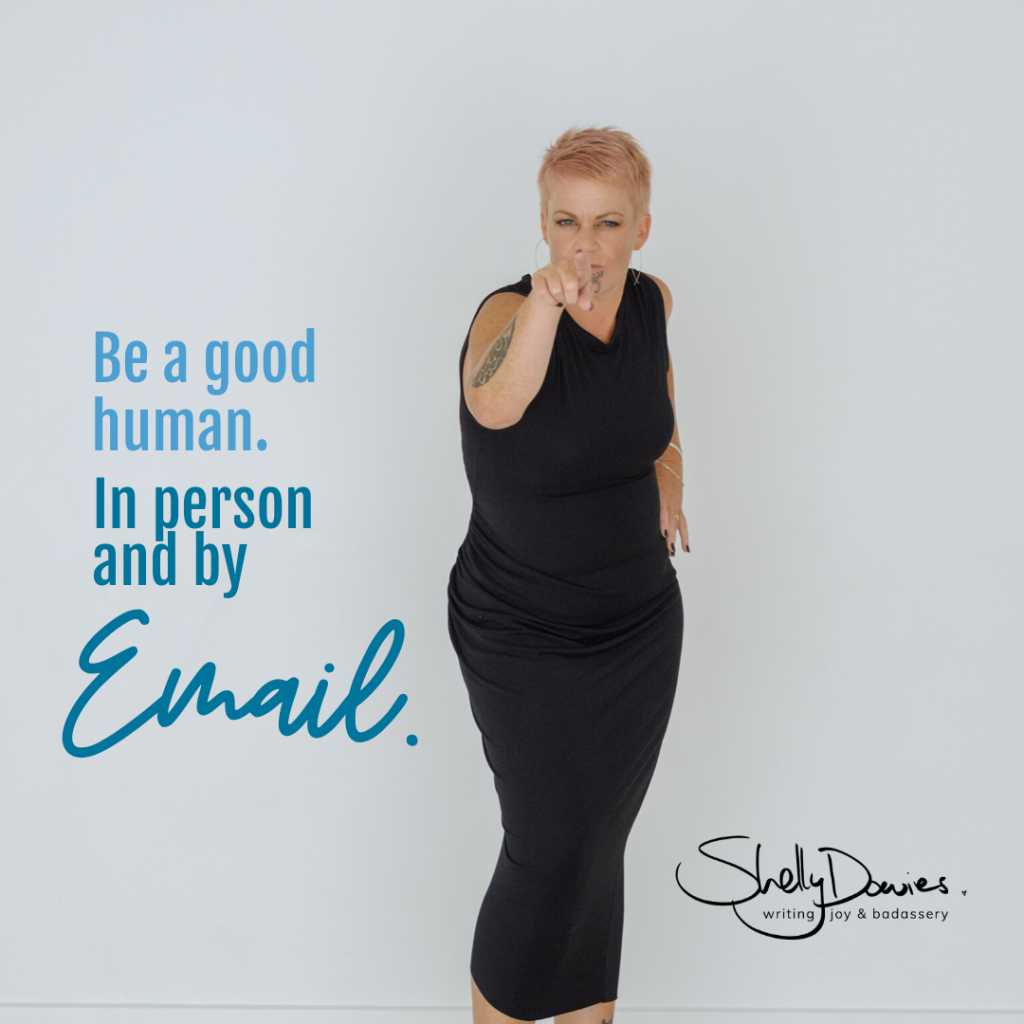Assertive business emails
How to be assertive without being blunt
(AKA how not to sound like a bitch in an email)
Can I tell you how long I angsted over whether to write bitch or dick in that subtitle?
One's offensive to women, the other to men. So then I considered fuckwit...(please laugh).
Anyway, bitch is what you get. Deal with it.
So let me set the scene:
You need to write a tricky email.
You need to push back, or say no, or deliver bad news, or correct someone.
You’re quite comfortable delivering this message, but youhave been told you’ve got a tendency to be a bit blunt. Or abrasive. Ordownright rude and offensive.
Or maybe you’re completely uncomfortable delivering this message because you’re worried about sounding bitchy.
And after all, you still have to keep working with these people, right?
Here's what you need to accomplish:
Just the right amount of info - not too little, not too much
1. Humanity
The way to balance out an assertive message is to make sure you’re being an actual human. Don’t write like a professional robot.
Use the words that feel true to you – sorry instead of apologies. Can’t instead of cannot. Happen instead of occur - you get the picture.
Greet the person as a human. Say Hi instead of Hello or Good morning or Dear.
And then connect in a human way:
Hey, thanks for explaining that
I'm so sorry, that's not quite right
I see things a bit differently
Bad news, I'm afraid
DO NOT have an overly friendly, happy-sounding first line if you’re about to say no or get tough or deliver bad news. It’s the worst thing you can do.
The way you connect with your reader has to be 2 things:
Authentic to who you are (ie, don’t be fake)
Congruent with the message (ie, happy email = positive greeting. Push back or bad news email = friendly but real and honest greeting.)
Above all, don’t fall into the trap that digital communications allow us to so often: don’t let the digital and physical distance between you and your reader lull you into feeling safe to say things you’d never say face to face.
Be a good human – in person and by email.
2. Clarity
The trick with clarity is using FEWER WORDS. Your message needs to be clear. Unambiguous. And the more words you use (usually to soften, or mitigate your fears about sounding rude or abrupt), the muddier the message.
You CAN make a clear, succinct statement of the bad news/hard message because you’ve already connected as humans in a very authentic and empathetic way.
You really WON’T sound blunt if you’ve done that part right!
So, if you’re writing to say no, make sure the no is in a simple clear statement, like:
No, I'm sorry we can't do that
We won't be able to do it quite like that (but here are some options of what we can do...)
Unfortunately, the answer is no.
Pushbacks are one of my favourites!
You can pushback in a very friendly assertive way:
Yes, I can do that for you once you've done XYZ
Yes, I can do that - I'll be able to start [date/time-next week, next month, next decade (just kidding, don't do that!)]
I can do X part of this, who can do Y and Z?
I can do ABC once I receive XYZ
Do you notice how every one of my examples is very short?
The main message MUST be concise. You can elaborate afterwards.
3. Just the right amount of info - not too little, not too much
Here's the trick - giving just the right amount of info AFTER your very succinct, clear message.
You probably can't get away with:
Because that’s simply not enough information. By the same token, though, you also shouldn’t write 3-5 paragraphs when your reader really just wants the yes or no plus a reason why.
So the way to figure out how much information to give is to get over yourself.
Rude, aye?
What I mean is, it’s not about you – it’s about them.
The way to figure out how much info to give your reader is purely based on WHAT THEY NEED TO KNOW, and NOT what YOU WANT THEM TO KNOW.
Those things are vastly different!!
It’s called being reader-centric, or empathetic. Putting yourself in your reader's shoes.
So let’s look at how that works:
So all of those parts work well.
Now we need to figure out how much info our reader needs.
We do this by putting ourselves in their shoes, reading the clear, succinct message as if we were them, and then asking ourselves “What would I want to know now?”
A vast amount of the time, it’s “Why?”
So, in a new paragraph (or even better, in a bullet list), explain why!
And then ask yourself again, “What would I want to know now?”
This is where there’s a huge amount of scope depending on the context. It might be a timeframe. It might be a next-step. It might be other options. It might be an apology.
As long as you’re writing with a clear perspective of your reader’s experience, you’ll do this well.
If you truly put yourself in the position of someone getting a no answer when they were hoping for a yes, this is the best way you could hope to receive bad news.
It’s not overly formal (which can easily offend – AKA sound bitchy).
It’s not too blunt (because we’ve provided enough info).
It’s not fluffy and wordy (which is just irritating because you have to work hard to get the key messages).
So there you go, good humans!
You CAN deliver the hard messages, be assertive, and NOT sound like a [insert your preferred insult here – don’t get me started. I have an impressive profanity vocab]!
_____________________________________
Psst!
If you're really looking to end the email torture forever, I can help!
What if I told you that there is actually a simple, incredibly fast formula to writing an email, and it's actually proven to get faster replies, increased buy-in and approvals, and make you look incredibly professional, confident, and efficient? Well, there is.
And it uses: - neuroscience to influence how the reader processes your message, and psychology to leverage on how we know readers behave at work.
What if I said you could sit down right now for ONE HOUR and learn how to use it and never look back? Less-chasing. Fewer games of email tennis. Significant amounts of time saved. Significant increases in productivity.
My online Write Better Emails course will change your life, today!
Need this for all your staff? Email us for a deal!
You'd rather I taught your team this magic in person? I can do that too! You can check out my 1-Day in-house Email Writing course here!













